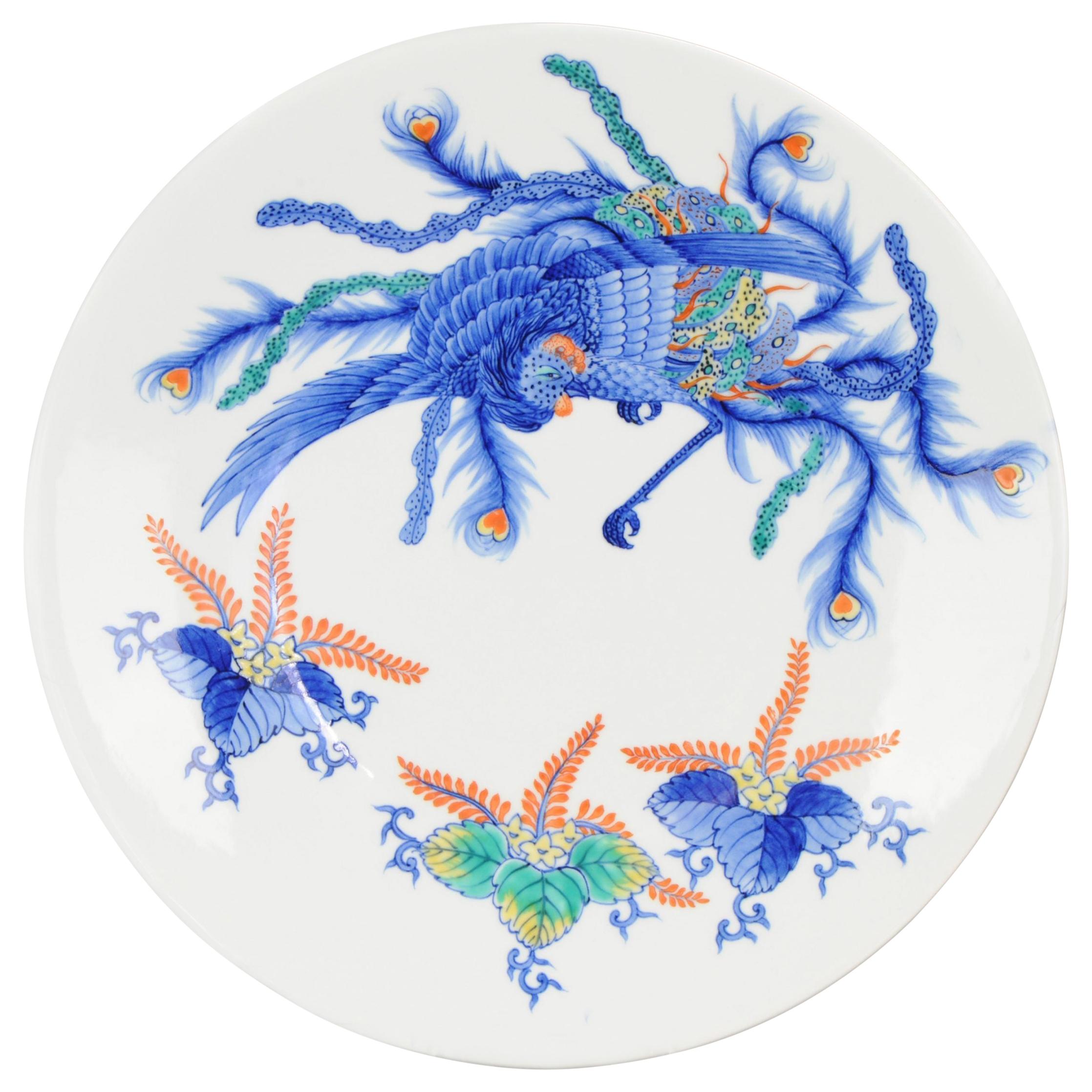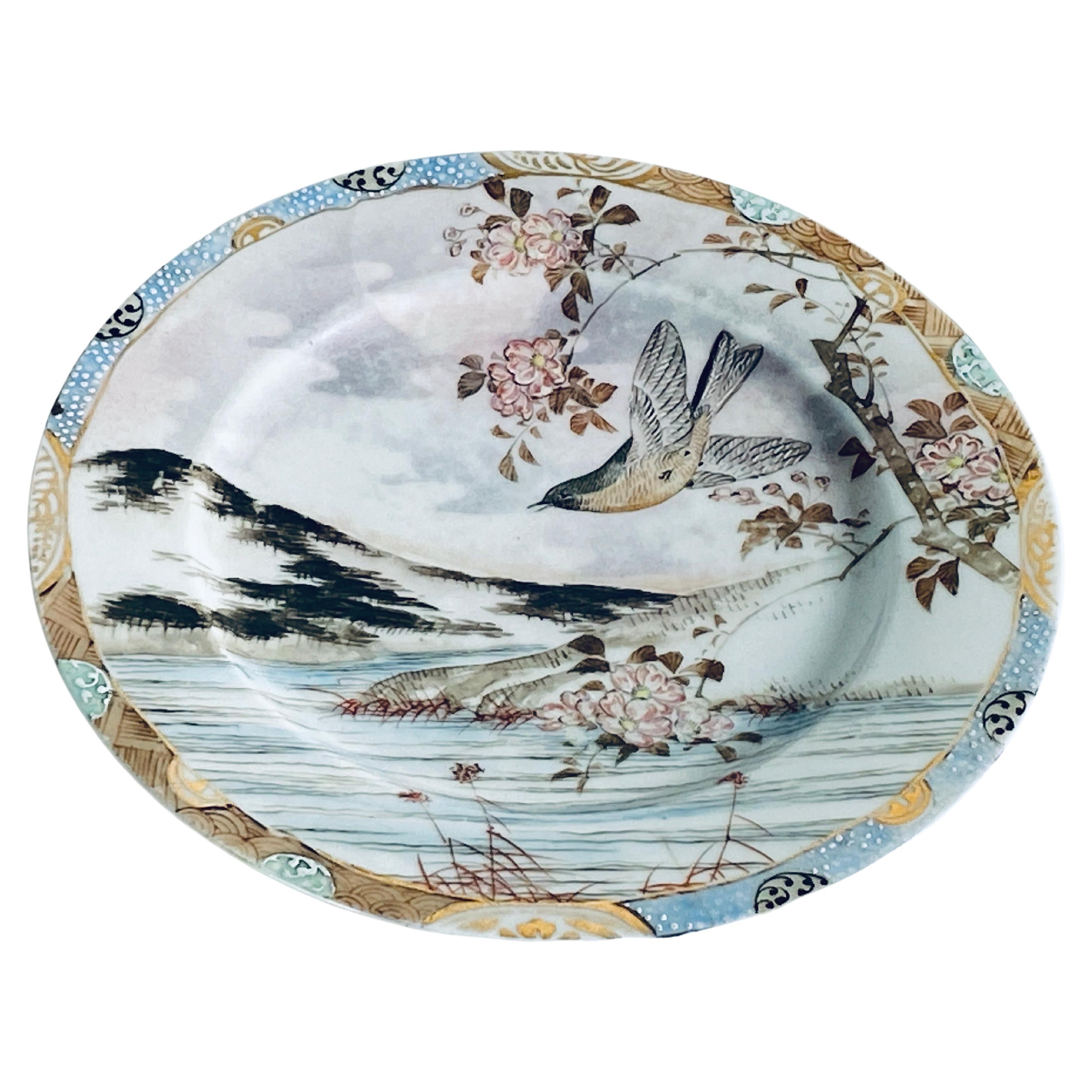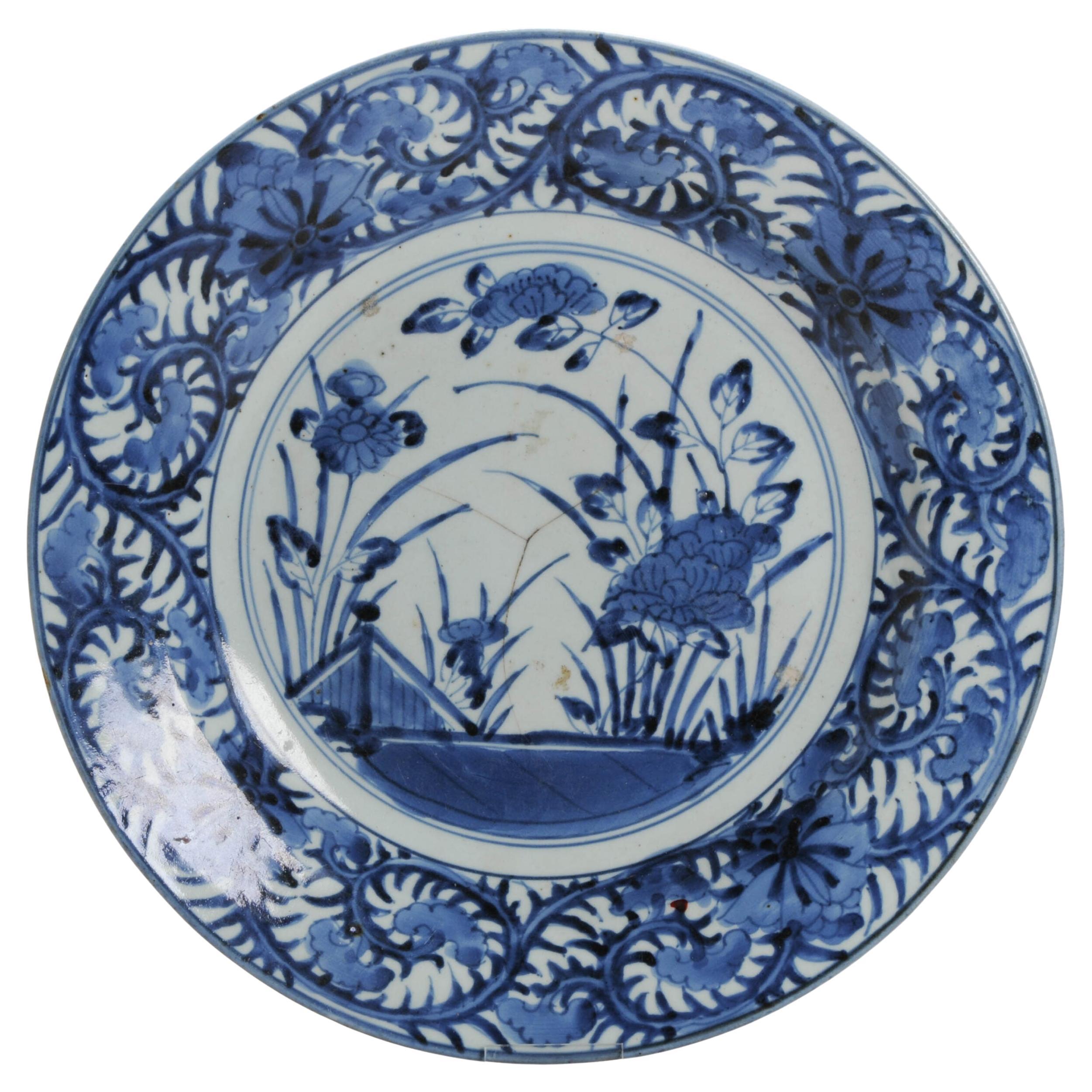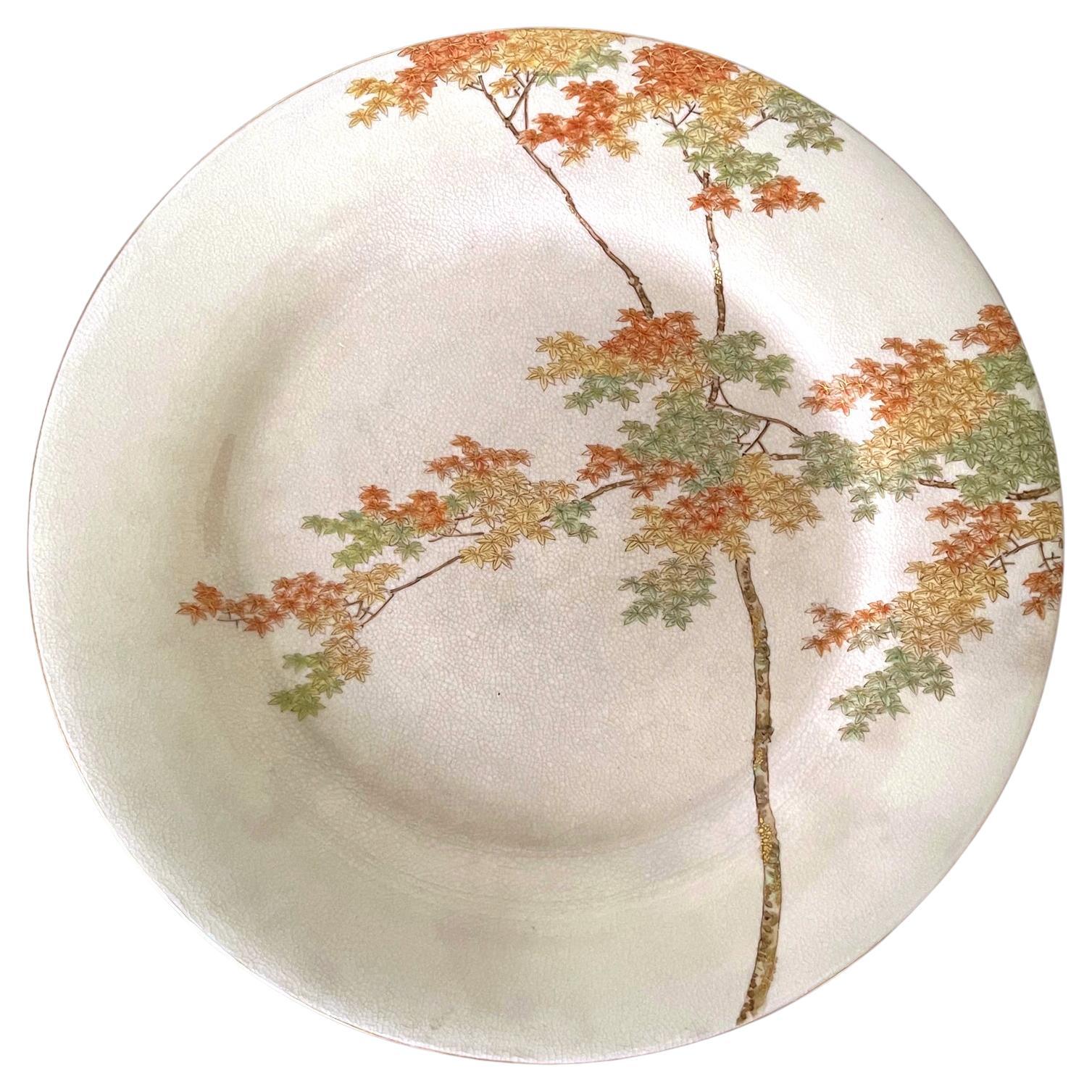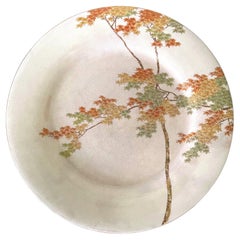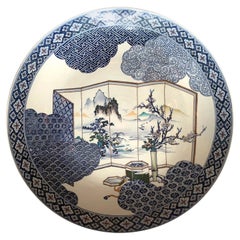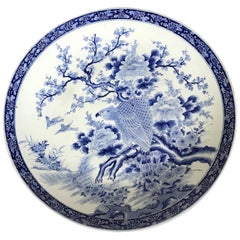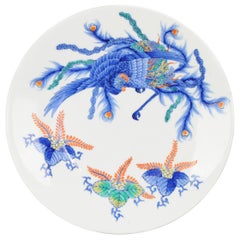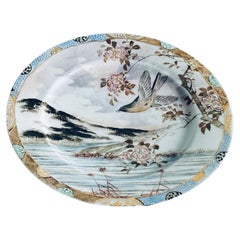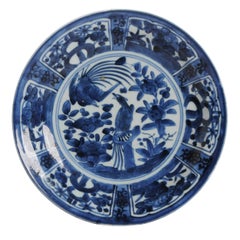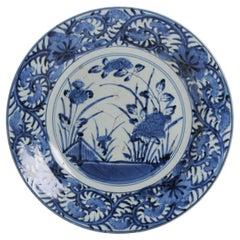Items Similar to Rare Large Japanese Porcelain Presentation Plate Makuzu Kozan
Want more images or videos?
Request additional images or videos from the seller
1 of 21
Rare Large Japanese Porcelain Presentation Plate Makuzu Kozan
$16,000
£12,232.85
€14,089.77
CA$22,420.91
A$25,030.83
CHF 13,115.78
MX$306,401.96
NOK 166,570.54
SEK 157,054.87
DKK 105,153.43
About the Item
A large presentation plate with striking pictorial design from the studio of Japanese Potter Makuzu Kozan. Also known as Miyagawa Kozan (1842–1916), Makuzu was one of the most established ceramists from Meiji Period. Born as Miyagawa Toranosuke, Kozan established his pottery studio in Yokohama around 1870s and later became one of the appointed artists to the Japanese Imperial household. His work was exhibited in many international fairs that the Meiji government participated at the turn of the century and won many grand prizes.
With an impressively size of 15 inch in diameter, this plate was likely made as a presentation piece for one of the expositions the studio participated in the early 20th century (This is also indicated by the signature on the bottom, see later). The surface was decorated with underglaze cobalt blue and a variety of shades in iron brown, using the novel technique developed by Kozan called Fuki-e (the blow painting) to achieve the striking dimensional effect. Being one of the most creative ceramists, Kozan started experimenting with new chemical colors from the West in the format of his porcelain glaze around 1880s. New colors allowed him to create underglaze designs that appeared bright, smooth and glossy. He even invented his own receipt of cobalt blue to achieve a much brighter yet softer shade, as evident on the grasses depicted on this vase. The fuki-e technique was demanding and uniquely featured in the works of Kozan studio.
Showcasing a striking composition of three flying geese in vivid motion, the artist rendered each bird with a unique composure yet together they form a harmonious and graphic-like picture. Beneath them, the tall grasses in blue glaze swayed in the wind. The fuzzy fibers on the tip of the stalks and the subtle serrated edges, undoubtfully suggest the season of fall, the time for the birds' southern-bound migration. The masterful use of the shades of the same color is breathtaking, as if the artist was painting on canvas instead of ceramic. The painterly quality, clearly at its Zenith, and the Ambience it evokes, call to mind the work of Ohara Hoson (1877-1945), a contemporary Japanese painter and woodprint designer who was part of the Shin-Hanga movement. It was not unusual during that exciting period when new ideas and techniques were exploding in the society, the artists who gained vision from Western Art, inspired each other's work, albert on totally different medium. The plate was signed underneath in an artist's archaic style seal, the specific detail of which help to date it to Meiji 37th to Taisho 5th (1904-1916). Works with these types of archaic seals were believed made mostly for oversea exhibitions during 1900-1920s and they were the best examples of Kozan's studio work that bridged the East and the West.
For a group of large exhibition pieces by Makuzu Kozan bearing the same seal in the Khalili Collection, see Oliver Impey et al., The Nasser D. Khalili Collection, vol.5, Ceramics, part I: Porcelain, London, Kibo Foundation, 1995, cat nos. 35-45.
.
- Creator:Makuzu Kozan (Artist)
- Dimensions:Height: 2.1 in (5.34 cm)Diameter: 15 in (38.1 cm)
- Style:Meiji (Of the Period)
- Materials and Techniques:
- Place of Origin:
- Period:
- Date of Manufacture:1904-1916
- Condition:Wear consistent with age and use. Fine antique condition with a spot on the base not covered by the glaze, which appears to occur during the making process. A small chip on the inner edge of the base ring as shown.
- Seller Location:Atlanta, GA
- Reference Number:1stDibs: LU945033493782
About the Seller
4.9
Platinum Seller
Premium sellers with a 4.7+ rating and 24-hour response times
Established in 2006
1stDibs seller since 2010
565 sales on 1stDibs
Typical response time: <1 hour
- ShippingRetrieving quote...Shipping from: Atlanta, GA
- Return Policy
Authenticity Guarantee
In the unlikely event there’s an issue with an item’s authenticity, contact us within 1 year for a full refund. DetailsMoney-Back Guarantee
If your item is not as described, is damaged in transit, or does not arrive, contact us within 7 days for a full refund. Details24-Hour Cancellation
You have a 24-hour grace period in which to reconsider your purchase, with no questions asked.Vetted Professional Sellers
Our world-class sellers must adhere to strict standards for service and quality, maintaining the integrity of our listings.Price-Match Guarantee
If you find that a seller listed the same item for a lower price elsewhere, we’ll match it.Trusted Global Delivery
Our best-in-class carrier network provides specialized shipping options worldwide, including custom delivery.More From This Seller
View AllFine Japanese Ceramic Plate by Kinkozan for Yamanaka & Co.
By Kinkozan
Located in Atlanta, GA
A fine Japanese ceramic satsuma plate made by Kinkozan and retailed by Yamanaka & Co. circa 1900-20s (late Meiji to early Tasho Period). The cream-color...
Category
Early 20th Century Japanese Meiji Ceramics
Materials
Ceramic
Fine Japanese Ceramic Plate by Kinkozan for Yamanaka & Co.
By Kinkozan
Located in Atlanta, GA
A fine Japanese ceramic satsuma plate made by Kinkozan and retailed by Yamanaka & Co. circa 1900-20s (late Meiji to early Tasho Period). The cream-color glazed plate features a very fine decoration of a maple tree in the midst of foliage color-changing in autumn. The poetic composition is stylized but also realistic, with a literati painter's quality, and was advantageously enhanced by the enamel colorings in incredible details. The maple tree is one of the favored motifs by the fine satsuma potters such as Yabu Meizan as it demonstrates the painter's skill. It is signed on the base in gilt kanji seal (Made by Kinkozan) and branded Yamanaka & Co in English. The plate was likely commissioned by the company from Kinkozan for its various galleries in US and Europe.
The Kinkozan family established their pottery business first in 1645 and by the end of 19th century, it had become the largest studio producer of Satsuma ware. By the 1850s, Kinkozan Sobei...
Category
Early 20th Century Japanese Meiji Ceramics
Materials
Ceramic
Massive Japanese Arita Presentation Porcelain Plate Meiji Period
Located in Atlanta, GA
This massive Japanese Arita plate was made in Hizen, circa 1890-1910s, at the end of Meiji period by a potter named Takeshige Yoshisuke who was active in A...
Category
Antique Late 19th Century Japanese Japonisme Ceramics
A Massive Antique Japanese Arita Porcelain Plate by Kajiwara Kiln
Located in Atlanta, GA
On offer is a truly impressive blue and white porcelain plate of Hizen ware, from Arita in Japan, circa mid to late-19th century. The plate was made by Kajiwara Kikujiro (菊次郎, the second Kiku son) and/or Kajiwara Kikusaburo (菊三郎, the third Kiku son who died in 1883) of the Kajiware Family Kiln of in Arita. It was decorated in a superb design with blue under-glaze, clearly out of a hand of a master. In a Classic Japanese composition that was popular in the Meiji Period, the plate displays a riot of auspicious elements, arranged still in a surprisingly harmonious manner. Anchoring the center of the design is an eagle perched on the branch of a blooming cherry tree, its talons clenching the bark and its wings about to open. The motion of the its immediate taking off is palpable. The trunk and the branches of the old cherry tree provide a spacial frame for the arrangement of large peonies with foliage, bundles of chrysanthemums, Chinese bell...
Category
Antique 19th Century Japanese Japonisme Ceramics
Materials
Ceramic
Fine Japanese Ceramic Plate by Kinkozan for Yamanaka & Co.
By Kinkozan
Located in Atlanta, GA
A fine Japanese ceramic satsuma plate made by Kinkozan and retailed by Yamanaka & Co. circa 1900-20s (late Meiji to early Tasho Period). The cream-color glazed plate features a very fine decoration of a persimmon tree bearing fruits. The composition is poetic, stylized but also realistic, with a literati painter's quality, and was advantageously enhanced by the enamel colorings in incredible details. The mastership of the medium came through the piece. It is signed on the base in gilt kanji seal (Made by Kinkozan) and branded Yamanaka & Co in English. The plate was likely commissioned by the company from Kinkozan for its various galleries in US and Europe.
The Kinkozan family established their pottery business first in 1645 and by the end of 19th century, it had become the largest studio producer of Satsuma ware. By the 1850s, Kinkozan Sobei...
Category
Early 20th Century Japanese Meiji Ceramics
Materials
Ceramic
Fine Japanese Ceramic Plate by Kinkozan for Yamanaka & Co.
By Kinkozan
Located in Atlanta, GA
A fine Japanese ceramic satsuma plate made by Kinkozan and retailed by Yamanaka & Co. circa 1900-20s (late Meiji to early Tasho Period). The cream-color glazed plate features a very fine decoration of a persimmon tree bearing fruits. The composition is poetic, stylized but also realistic, with a literati painter's quality, and was advantageously enhanced by the enamel colorings in incredible details. The mastership of the medium came through the piece. It is signed on the base in gilt kanji seal (Made by Kinkozan) and branded Yamanaka & Co in English. The plate was likely commissioned by the company from Kinkozan for its various galleries in US and Europe.
The Kinkozan family established their pottery business first in 1645 and by the end of 19th century, it had become the largest studio producer of Satsuma ware. By the 1850s, Kinkozan Sobei...
Category
Early 20th Century Japanese Meiji Ceramics
Materials
Ceramic
You May Also Like
Antique Japan 20th Century Period Japanese Porcelain Plate with a Fenghuang an
Located in Amsterdam, Noord Holland
Lovely Japanese porcelain plate with nice bright coloring and an interestings scene.
Condition
Overall condition perfect. Measure: 267mm.
Category
20th Century Japanese Meiji Ceramics
Materials
Earthenware
$708 Sale Price
20% Off
Fine Chinese Export Porcelain Plate
Located in Auribeau sur Siagne, FR
This is a plate from China, it has been made late 19th century, very nice colors, black, brown blue. It is a canton plate.
Category
Antique Late 19th Century Chinese Chinese Export Dinner Plates
Materials
Porcelain
$255 Sale Price
20% Off
Antique Edo Period Japanese Porcelain Plate Arita Kraak Dish, 1700
Located in Amsterdam, Noord Holland
Sharing this very nice edo period, 1680-1700, example. With a central scene of a birds The rim beautifully painted, quite unusual.
Unmarked at base.
Arita ware, also known as Arit...
Category
Antique 17th Century Japanese Decorative Dishes and Vide-Poche
Materials
Porcelain
$896 Sale Price
20% Off
Antique Edo Period Japanese Porcelain Plate Arita Kraak Dish, Ca 1700
Located in Amsterdam, Noord Holland
Sharing this very nice edo period, 1680-1700, example. With a central scene of a flowers. The rim beautifully painted, quite unusual.
Unmarked at base
Arita ware, also known as Ar...
Category
Antique 17th Century Japanese Edo Decorative Dishes and Vide-Poche
Materials
Porcelain
Chinese Ming Dynasty Ko-Sometsuke Wucai Porcelain Plate
Located in Newark, England
CHONGZHENG 1628-1644
From our Chinese collection, we are delighted to offer this rare example Chinese Ko-Sometsuke Wucai Porcelain Plate. The plate potted in porcelain ceramic of ci...
Category
Antique Early 17th Century Chinese Ming Ceramics
Materials
Ceramic, Porcelain
Antique Ko Akae Plate Chinese porcelain Wucai 17th C (1621-1627) Ming Marked
Located in Amsterdam, Noord Holland
Presenting an exquisite early 17th century dish from Jingdezhen, crafted for the Japanese market. This stunning piece features the Ko Akae decoration of an underglaze blue landscap...
Category
Antique 17th Century Chinese Dinner Plates
Materials
Porcelain
$8,031 Sale Price
20% Off
More Ways To Browse
Japanese Porcelain Bird
Antique Japanese Seals
Japanese Large Plate
Rare Japanese Porcelain
Japanese Blue Porcelain Plates
Japanese Pottery Plate
Porcelain Japanese 1900
Rare Antique Asian Vases
Japanese Bird Plates
Antique Porcelain Fairings
Japanese Cobalt Blue Ceramics
Japanese Cat
Japanese Ceramic Birds
Pottery Cat
Antique Southern Pottery
Studio Pottery Bird
Antique Porcelain Cats
Gray Ceramic Cat
